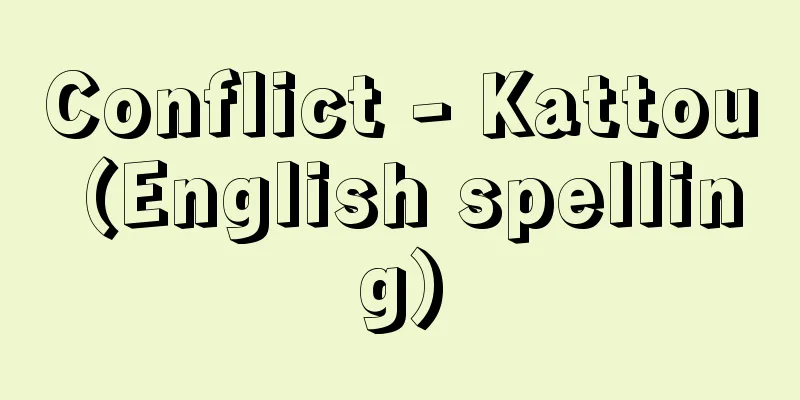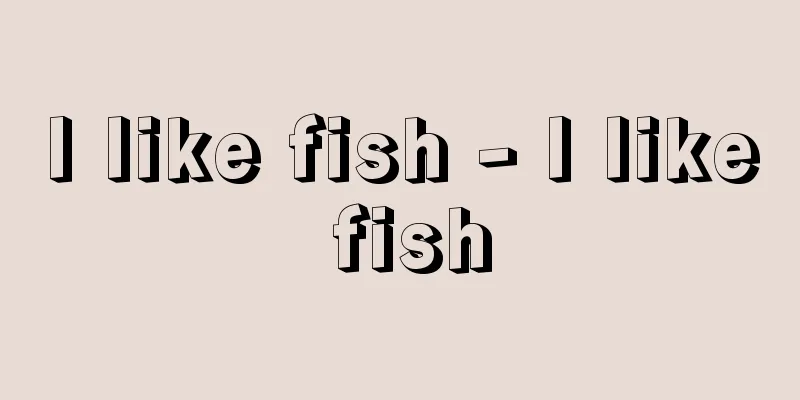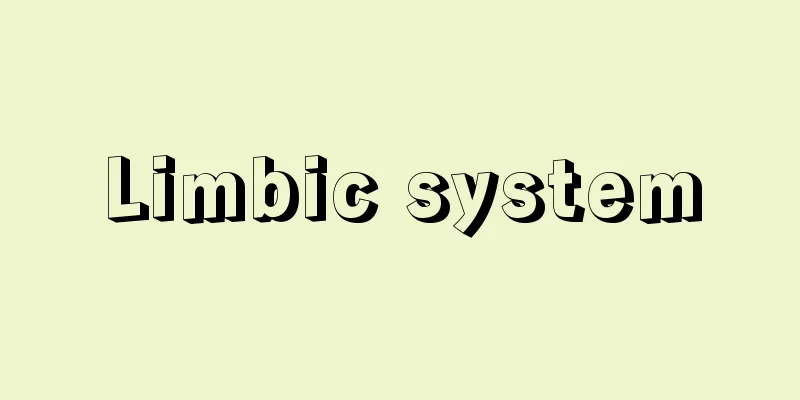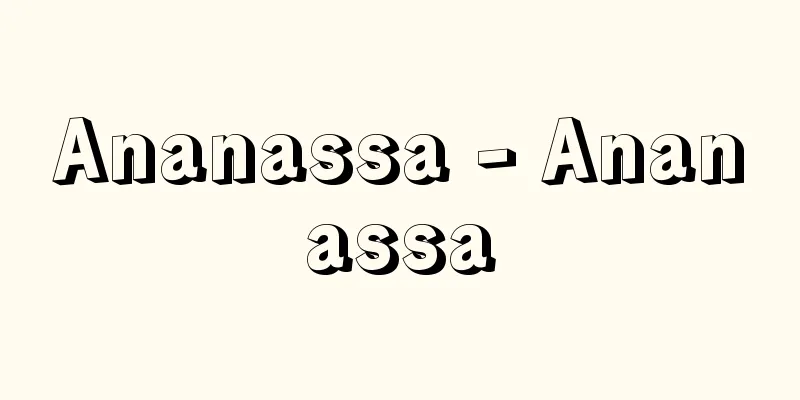Conflict - Kattou (English spelling)

|
Conflict occurs when two or more motivations (goals) compete with each other. [Three types of conflict] The properties of objects in the environment that cause humans or animals to approach or avoid a goal are called valence. When they cause approach, they are called "positive valence," and when they cause avoidance, they are called "negative valence." Valence acts as a motivation that causes approach and avoidance behavior. Lewin, K. pointed out in A Dynamic Theory of Personality (1935) that there are three types of conflict: Approach-approach conflict: When two different goals have equal positive valence, such as being accepted into two universities at the same time and wanting to attend both, approach-approach conflicts are usually relatively easy to resolve by choosing one of the goals. ⑵Avoidance-avoidance conflict A situation in which you are caught between two goals with negative incentives, like a tiger at your front gate and a wolf at your back gate. For example, you have to study English and math, but you are not good at either subject, and you cannot concentrate on studying either. In this case, you can escape from the situation by doing something completely unrelated, such as cleaning your room, but if that is not possible, the tension and discomfort between the two goals will continue. 3. Approach-avoidance conflict This is when a goal has both positive and negative valence at the same time. For example, if a person you are dating proposes to you, but the things you like and dislike about that person are roughly equal, it is difficult to make a decision. This type can also be used when there is an obstacle (with negative valence) in front of the goal (with positive valence). Levin (1935) gives the example of a child who is afraid of water and wants to retrieve a ball that is lying on the shore. The child approaches the shore to retrieve the ball, but stops at a certain point. The water prevents the child from approaching the ball, but at the same time, the attraction of the ball prevents the child from leaving. Miller, NE (1944) conducted experimental studies on approach-avoidance conflict using rats. After training the rats to come to a goal in search of food, they were given an electric shock every time they reached the goal. In this case, the goal has both positive and negative attractiveness, and the rats run toward the goal, but show signs of conflict by going back and forth along the way. Miller (1944) also pointed out the double-approach-avoidance conflict. This is a state in which a person is caught between two goals that have both positive and negative attractiveness. For example, "I have received job offers from two companies, Company A and Company B. Company A has generous benefits but low salaries. Company B has high salaries but unstable employment." Conflict is the source of frustration. In general, frustration progresses in the following order: frustration situation, frustration state, and frustration reaction. A state in which a human or animal is hindered by some obstacle in the middle of a desire-satisfaction behavior to reach a goal is called a frustration situation, and an unpleasant state of tension resulting from the thwarting of a desire is called a frustration state. Humans and animals take some kind of action to relieve the unpleasant state of tension caused by frustration, which is a frustration reaction. [Interpersonal conflict] Interpersonal conflict refers to discord or confrontation between individuals, and is known to affect individual happiness and human relationships as it is a major source of stress in social life. Causes of conflict include differences in desires (conflict of interests), disagreements in opinions or views (cognitive conflict), and conflicts over the suitability of norms (morality, ethics, justice, etc.) (norm conflict) (Thomas, KW, 1992). Researchers have examined social-cognitive, situational, and personality factors that may contribute to the causes of conflict, as well as the cognitive, emotional, and motivational factors that influence resolution strategies and the impact of conflict outcomes. In recent years, attention has been focused on conflicts between intimate partners, such as spouses and lovers, because domestic violence (DV), i.e., domestic violence and abuse, is a serious social problem that is caused by family conflicts. According to Bowlby, J. (1988)'s attachment theory, intimate relationships alleviate distress when individuals face threats and restore psychological resources to cope with them. The attachment style formed in the mother-child relationship will affect interactions between opposite-sex individuals in later life, but individuals with strong attachment anxiety are sensitive to rejection and therefore tend to perceive conflicts in intimate relationships, perceive them as stressful, and react in ways that intensify the conflict (domination, aggression, etc.), which tends to result in a deterioration of the relationship (Campbell, L., et al., 2005). This negative chain reaction is due to their biased mental working model of intimate relationships, which encourages negative attributions to their partners. In addition, stress generation theory (Eberhart, N. K., & Hammen, C., 2009), which states that individual characteristics bring about stressful situations, also applies to interpersonal conflicts, and individuals with strong attachment anxiety may trouble their partners by persistently seeking reassurance, thereby triggering the conflicts they fear. Another research area is interpersonal conflict within organizations. Conflict as a stressor reduces the work efficiency of organizational members and impairs the functionality of the organization, but if it is resolved appropriately, it can have a beneficial effect (Table). The main factor that determines the success or failure of a solution is the type of strategy used to resolve it. Traditionally, the model of Blake, RR and Mouton, JS (1964), which positions five strategies of cooperation, compromise, concession, competition, and avoidance on two axes of self-interest and other-interest, has been widely used to classify these resolution strategies, but in recent years, the three-strategy model of distribution (confrontation), integration (cooperation), and avoidance has been used as a simpler model (Kuhn, T., & Poole, MS, 2000). One of the factors that determine which resolution strategy is selected is the type of conflict. Relationship conflicts resulting from differences in beliefs, values, and personality tend to intensify confrontation, but moderate conflicts related to job content (task conflicts) can be resolved by integrative strategies, which are likely to lead to organizational revitalization and efficiency (De Dreu,CKW,2006; Jehn,KA,1997). In addition, as individual factors that determine the selection of strategies, the Mayer-Briggs Type Indicator based on Jung,CG's theory, the Gregorian model that shows differences in attitudes toward work, the social style model that assumes two dimensions of assertiveness and responsiveness, as well as communication style and emotional intelligence, have been attracting attention (McCorkel,S.,& Reese,MJ,2010). →Interpersonal Relationships [Kenji Sato], [Kenichi Obuchi] (Kenichi Obuchi, 2008) Table: Constructive effects of conflict within organizations Latest Sources Psychology Encyclopedia Latest Psychology Encyclopedia About Information |
|
二つ以上の動機(目標)が競合することを葛藤という。 【葛藤の三つの型】 ヒトや動物を,目標に対して接近させたり,回避させたりする環境内の対象の性質を誘意性valenceとよび,接近させる場合は「正の誘意性」,回避させる場合は「負の誘意性」とよぶ。誘意性は接近,回避の行動を引き起こす動機づけの働きをもつ。レビンLewin,K.は,葛藤には以下の三つの型があることを『パーソナリティの力学説A Dynamic Theory of Personality』(1935)で指摘した。 ⑴接近-接近型葛藤approach-approach conflict 異なる二つの目標が,それぞれ等しい正の誘意性をもっている場合で,たとえば二つの大学に同時に合格し,しかもどちらにも入学したいようなケースである。接近-接近型葛藤は,普通,目標の一方を選択することにより比較的容易に解決される。 ⑵回避-回避型葛藤avoidance-avoidance conflict 負の誘意性をもつ二つの目標にはさまれた状態で,いわば「前門の虎,後門の狼」といった状態をいう。たとえば,英語と数学の勉強をしなければならないが,両科目ともに苦手な科目であり,いずれの科目も勉強が手につかないといったときである。この場合,まったく無関係な行動,たとえば部屋の掃除をするなどして,その場から逃避するもできるが,それが不可能な場合,二つの目標の間にあって緊張と不快が継続することになる。 ⑶接近-回避型葛藤approach-avoidance conflict 一つの目標が正と負の誘意性を同時にもつ場合である。たとえば,交際をしている相手からプロポーズを受けたが,その人の中の好きな面と嫌いな面とがほぼ同じぐらいである場合には,なかなか決断することができない。また,目標(正の誘意性をもつ)の前に障害(負の誘意性をもつ)がある場合も,この型に入れることができる。レビン(1935)は,水に恐怖心を抱いている子どもが,波打ち際にあるボールを取りたがっているという例を挙げている。子どもはボールを拾おうとして波打ち際に近づくが,ある地点で立ち止まる。水がボールに近づくのを妨げるが,同時にボールに対する魅力がそこから立ち去ることを妨げる。 接近-回避型葛藤に関しては,ネズミを使った実験的検討がミラーMiller,N.E.(1944)によって行なわれている。餌を求めて目標地点まで来るようにネズミを訓練した後で,目標に到着するたびに電気ショックを与えた。この場合,目標は正と負の誘意性をもつことになり,ネズミは目標に向かって走り出すが,途中の地点で行きつ戻りつという葛藤の徴候を示すようになる。さらにミラー(1944)は,二重接近-回避型葛藤double-approach-avoidance conflictについても指摘している。これは,正の誘意性と負の誘意性を同時にもった二つの目標にはさまれた状態のことである。たとえば「A社とB社の2社から就職の内定をもらった。A社は福利厚生が手厚いが給料は安い。B社は給料が高いが雇用が不安定だ」といった場合である。 葛藤は,フラストレーションfrustration(欲求不満)の源泉となる。一般に,フラストレーションは,フラストレーション状況,フラストレーション状態,フラストレーション反応という順番で進む。ヒトや動物が目標へ到達するための欲求充足行動の途中で,なんらかの障害によってその行動が妨害された状態をフラストレーション状況とよび,欲求阻止の結果としてもたらされる不快な緊張状態をフラストレーション状態とよぶ。ヒトや動物は,欲求不満という不快な緊張状態を解消するためになんらかの対処を行なうが,これがフラストレーション反応である。【対人葛藤interpersonal conflict】 対人葛藤とは個人間の不一致や対立を指し,社会生活における主要なストレス源であることから,個人の幸福や人間関係に影響を与えることが知られている。葛藤原因には願望の違い(利害葛藤),意見や見解の不一致(認知葛藤),規範(道徳,倫理,正義など)との適否をめぐる対立(規範葛藤)などがある(Thomas,K.W.,1992)。研究者たちは,葛藤原因にかかわるものとして社会的認知,状況要因,人格要因など,また解決方略を左右する認知・感情・動機づけ要因,それに葛藤結果の影響などを検討してきた。 ドメスティック・バイオレンス(DV),すなわち家庭内暴力や虐待など深刻な社会問題の背景に家族間葛藤があることから,近年,夫婦・恋人など親密な男女間の葛藤に焦点が当てられている。ボウルビィBowlby,J.(1988)のアタッチメント理論によると,親密関係は個人が脅威に直面した際,苦悩を和らげ,これに対処する心的資源の回復をもたらすものである。母子関係において形成された個人の愛着スタイルは,長じて異性間の相互関係にも影響するが,愛着不安の強い個人は,拒絶されることに敏感であるため親密関係において葛藤を知覚しやすく,またこれをストレスと感じ,葛藤を激化させるように反応し(支配や攻撃など),その結果,関係悪化を招く傾向がある(Campbell,L.,et al.,2005)。こうした負の連鎖は,親密関係に対する彼らの偏った心的作業モデルmental working modelによるもので,これがパートナーに対するネガティブな帰属を促す。また,個人特性が自らストレス状況を招くとするストレス発生理論stress generation theory(Eberhart,N.K.,& Hammen,C.,2009)は対人葛藤にも当てはまり,愛着不安の強い個人は執拗な再保証要求によってパートナーを悩ませ,自ら恐れている葛藤を誘発してしまうことがある。 もう一つの研究分野は,組織内の対人葛藤である。ストレッサーとしての葛藤は組織成員の作業能率を低下させ組織の機能性を損なうが,適切に解決される場合には有益な効果をもたらすこともある(表)。解決の良否を決める主な要因は,解決のために用いられる方略の種類である。この解決方略の分類については,従来,自己関心と他者関心の2軸上に協力,妥協,譲歩,競争,回避の5方略を位置づけるブレークBlake,R.R.とモートンMouton,J.S.(1964)のモデルがよく用いられてきたが,近年は分配(対決),統合(協調),回避の3方略モデルが簡便なものとしてよく用いられている(Kuhn,T.,& Poole,M.S.,2000)。いずれの解決方略が選択されるかを規定する要因の一つは葛藤のタイプである。信条・価値観・人格などの違いに由来する関係葛藤relationship conflictは対決を激化させやすいが,職務内容にかかわる適度の対立(職務葛藤task conflict)は統合的方略によって解決され,組織の活性化と効率化をもたらす可能性が高い(De Dreu,C.K.W.,2006; Jehn,K.A.,1997)。また,方略の選択を規定する個人要因としては,ユングJung,C.G.の理論に依拠するメイヤー-ブリッグス類型指標,仕事に対する姿勢の違いを表わすグレゴリック・モデル,主張性と反応性の2次元を仮定する社会的スタイル・モデル,それにコミュニケーション・スタイル,情動知能などが注目されている(McCorkel,S.,& Reese,M.J.,2010)。 →対人関係 〔佐藤 健二〕・〔大渕 憲一〕 (大渕憲一,2008 )"> 表 組織内葛藤の建設的効果 出典 最新 心理学事典最新 心理学事典について 情報 |
Recommend
Thinning - Drought
It is the opposite of the final cutting in clear-...
Wisdom - Jochi
Years of birth: unknown. A painter-monk active in ...
shearwater
...In Japan, the white-breasted petrel P. hypoleu...
Taku [city] - Taku
A city in central Saga Prefecture. It was incorpor...
Karakami
...Furthermore, flying clouds are sometimes added...
Tachyoryctes
...They give birth to 2-6 young in March-May. The...
Referendum
Referendum is a system in which the people directl...
Cestrum nocturnum
…[Ichiro Sakanashi]. … *Some of the terminology t...
solubility parameter
…Even when the solid is a metal, the same situati...
Yanshan upheaval - Enzanhendo
...In a broad sense, it refers to the Mesozoic to...
Arakabu - Arakabu
…The name Kasago is said to come from the fact th...
Oga-go - Ooka-go
... Old settlements are found in the spring water...
Ingarra - Ingarra
…Ancient city of Sumer. The ruins are located in ...
Plug receptacle
…The Japanese colloquial name for an outlet, plug...
Uji Dolls - Uji Ningyo
A wooden doll made in Uji, Kyoto Prefecture. Made ...

![Sargon [II] - Sargon](/upload/images/67cbb0574d39f.webp)







